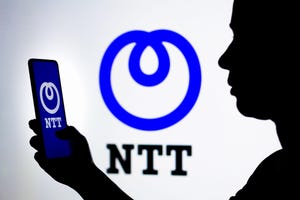Salesforce says it helps telcos improve sales by getting a single view of customers across Internet, mobile, phone and in-person interactions.

Getting to know customers is a big problem for telcos. Customers interact with carriers in person, over the Internet, using mobile devices and phoning in to call centers. They connect from different locations. Merging all those different contact channels into a single view of each individual customer is hard.
Salesforce.com Inc. says it has the answer, claiming its flagship cloud CRM service can help telcos get a unified view of both customers and prospects, leading to increased sales, enhanced efficiency and improving telcos' historically bad customer satisfaction scores, Chris Bauschka, senior director for communications and media at Salesforce, tells Light Reading.
"Customers are demanding a simple experience," Bauschka says. Telcos' consumer and enterprise customers expect all companies to provide the same easy experience that they get from Amazon.com Inc. (Nasdaq: AMZN) and Apple Inc. (Nasdaq: AAPL). "The telecom industry has been left far behind," Bauschka says, noting that customer satisfaction surveys for telecoms lag behind other sectors.
Service providers look to the cloud to transform their CRM systems, and Salesforce is leading the way, says Adaora Okelele, senior analyst for telecoms operations and IT at Ovum. Salesforce is gaining market share as telcos change buying habits. The cloud is becoming the option of choice as telcos look to reduce cost, leading to Salesforce taking market share from CRM incumbents, including Ericsson AB (Nasdaq: ERIC), Oracle Corp. (Nasdaq: ORCL), Amdocs Ltd. (NYSE: DOX), and smaller regional players like AsiaInfo Inc. (Nasdaq: ASIA), Ovum finds.
And it's not just about cutting costs. Those traditional CRM suites provide customer support for traditional channels, voice and SMS. But Salesforce supports customer relationships in the "digital channel" -- everything telcos offer other than voice and SMS, including data, telcos' own streaming video offerings and OTT services.
"Telcos are looking at getting access to a single platform that connects them to all channels at every point in time," Okelele says. "Salesforce is trying to position itself as the single platform, bringing marketing, analytics [and] social to become a single port of call, one point where telcos can derive all the benefits they want from the platform."
Are you a service provider executive who wants to learn more about the impact of web-scale competition on the communications sector? Join us for Light Reading's third annual 2020 Vision Executive Summit taking place in Rome, December 6-8. Contact our events team to find out if you qualify for a VIP pass.
Bauschka cites several examples of telcos using Salesforce to improve the customer experience.
Telefónica SA (NYSE: TEF) is using Salesforce for sales, customer service and its customer portal across 13 countries in Latin America, Bauschka says. Each country operates as an independent business unit, and Telefónica wants to get a unified view of customers across the entire company. "You can't do that if you're on 13 different CRMs and back-office systems," Bauschka says.
The challenge is also great for service providers serving SMBs. These providers often literally have sales reps going door to door, canvassing areas, and using paper and offline systems for record keeping. These providers are looking to go from "paper to mobile," Bauschka says, replacing paper systems with simple mobile apps that allow salespeople to go through the entire sales cycle with the customer, from information to demo to signature
Next page: Identifying 'warm leads'
Identifying 'warm leads'
When Comcast Corp. (Nasdaq: CMCSA, CMCSK) made that transition it saw revenue go up 12%, a result of eliminating trips back to the office, Bauschka says. Similarly, Telus Corp. (NYSE: TU; Toronto: T) doubled channel sales for cable services by going paper to mobile.
Virgin Media Inc. (Nasdaq: VMED) increased consumer conversions by 40% after implementing Salesforce, Bauschka says. Previously, Virgin signed up new customers by going door-to-door in residential neighbors and knocking. Now, Virgin first identifies "warm leads" using Salesforce, and sends salespeople out to target those individuals, Bausckha says.
Virgin uses Salesforce to better understand consumer behavior. The telco found that 80% of consumers start shopping online, but only 20% close online. "That was a huge problem for Virgin because they have siloed channels," Bauschka says. Virgin leveraged Salesforce to consolidate web, retail and call center into a single view of the sales lead.
Virgin began by capturing interactions in stores. If the interaction does not lead to sales, it gets routed to telesales, where the customer may get a follow-up call or follow-up email, depending on how far along they got in the sales process before dropping out. A consumer who got very far into a sale before quitting might get invited back to the store for a special "VIP night," Bauschka says.
Salesforce allows service providers to consolidate systems in customer contact call centers. Agents previously had to switch between up to 30 different systems, including multiple billing systems, trouble-tickets and ordering. "They're swivel-chairing them all," Bauschka says. Agents focus on which system they have to call up next and what fields they have to fill in. "They're not listening to the customer because they're focused on the system." Salesforce consolidates all that into a single-view desktop, communicating with the same back ends. "You give the agent a better desktop for their customer work," he says.
The biggest top-tier telcos mostly haven't moved to Salesforce, despite Bauschka's examples to the contrary, Okelele says. Salesforce is more popular among Tier 3 and Tier 4 providers, and the cloud CRM provider is focused on moving up the tiers, she says.
Implementing Salesforce is not without obstacles. "Cloud is advanced in other industries, but it's fairly new in telcos," Okelele says. Telcos can find it hard just getting started -- deciding where to implement Salesforce, whether on the consumer side, enterprise side or internal operations.
Telcos also are cautious about protecting customer data; many would prefer it on their own premises, Okelele says.
Related posts:
— Mitch Wagner, 
 , Editor, Light Reading Enterprise Cloud
, Editor, Light Reading Enterprise Cloud
About the Author(s)
You May Also Like











